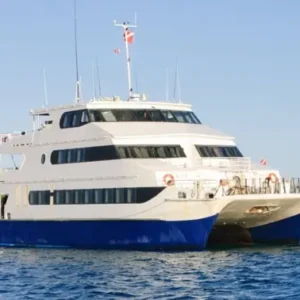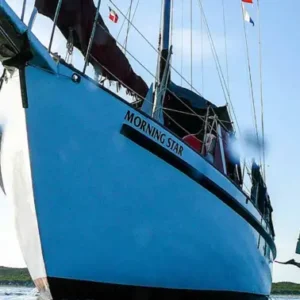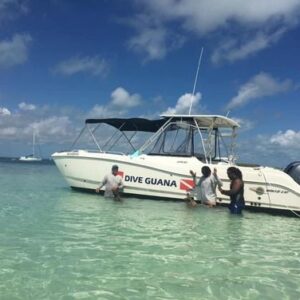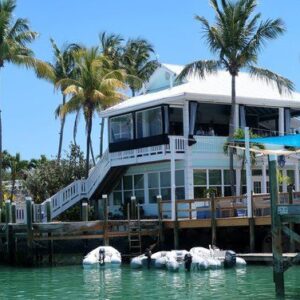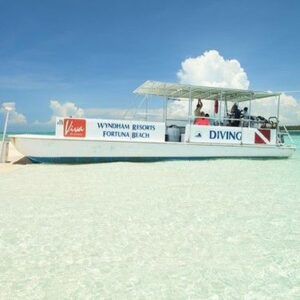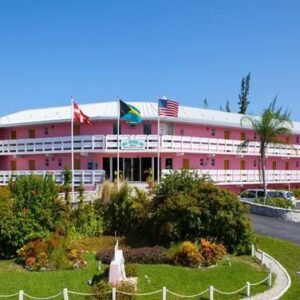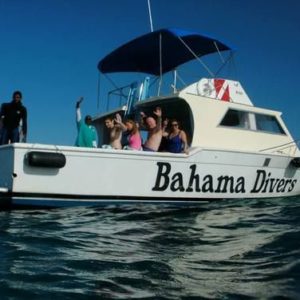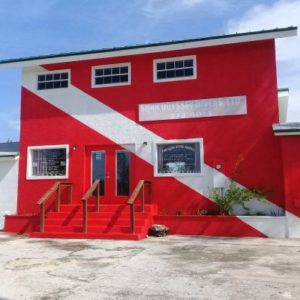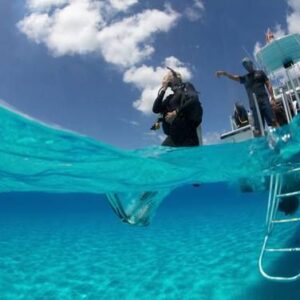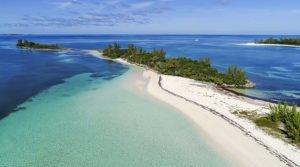
Crystal-clear waters and thriving coral reefs surround the 700 islands (and over 2,000 cays) of the Bahamas, making it one of the most outstanding scuba diving, and snorkeling, locations to visit. You’ll find sunken ships, underwater caves, blue holes, whales, dolphins, and an abundance of sharks (tiger, hammerhead, silky, dusky, and reef to name a few). Shallow reefs line most of the islands, making the Bahamas a beginner scuba diver’s paradise. While advanced scuba divers can be challenged by dramatic cave dives in Grand Bahama and a 6,000 ft wall dive in Andros. All levels of divers will find magic under the water surrounding the Bahamas thanks to 340 days of sunshine and 80 degree weather year-round.
GETTING THERE
- Required Travel Documents: U.S. Citizens are now required to present a valid U.S. passport when traveling to the Bahamas.
- Airports: The largest airport in the Bahamas is the Lynden Pindling International Airport and is located in the capital city of Nassau. There’s also an airport on Grand Bahama (Freeport Grand Bahama International Airport) and on Exuma (George Town International Airport), which both fly internationally. There are direct flights from many U.S. cities including Atlanta, Charlotte, Orlando and Miami.
GETTING AROUND
- Use public buses (jitneys), taxis, or rent a car to get around the Bahamas. Uber and Lyft do not operate on the islands.
- Jitneys are the easiest, and cheapest, way to get around New Providence Island ($1.25 to $3.50 per person) and Grand Bahama Island ($1 to $8, depending on distance). Be aware that only exact change is accepted.
- For island-hopping, you can rent charters, take water taxis, or hop on the inter-island ferry from Nassau to Grand Bahama, Andros, the Exumas, Harbour Island, Eleuthera, The Abacos, and Long Island. Depending on the distance, one-way fees for adults usually range from $29 to $81. You can also hop from Nassau to Paradise Island by ferry for $4 one-way.
- Driving Rules: UK laws are followed on the Bahamas, so make sure you drive on the left side of the road if you rent a car.
GOOD TO KNOW
- Country: Independent
- Time Zone: Eastern Daylight Time
- Primary Language: English
- Currency: Bahamian Dollar (BSD)
- US dollars are accepted everywhere, and equivalent in value, so if you’re traveling from the United States you do not need to exchange your money. If you’re traveling from another country, it’s advised to exchange your money before you get to the Bahamas.
- Credit cards are accepted on most of the islands, but on the more remote islands, cash is required for purchases.
- Cell Phone Service:
- Many US cell phone plans have roaming in Nassau and Grand Bahama. Foreign cell phone plans do not work within the Bahamas, and a Bahamas Prepaid SIM card can be purchased instead.
- Voltage: 120 volts
- All American devices are compatible. British and European appliances will require a two-pin flat adapter and a 220-volt converter.
- Hurricane Details
- Hurricane season in the Bahamas runs from June 1 to November 30, with the peak hurricane season landing early August through the end of October.
DIVE CONDITIONS
-
WATER TEMPERATURE:
- 75-88 degrees fahrenheit (22-30 celsius)
- You can expect average water temperatures of 80 degrees, making the Bahamas the dreamiest place to swim and scuba dive year-round. The tropical climate allows coral and marine life to flourish, giving scuba divers a kaleidoscope of colors and experiences.
-
WATER VISIBILITY:
- Average visibility of 80-100 ft (24-30 m)
- The water in the Bahamas is crystal-clear with visibility penetrating over 200ft.
- Seaweed organisms that require sunlight to survive usually grow at depths above 328 ft (100 m). But in the Bahamas, these plants have been found at depths of 1295 ft (259 m), meaning sunlight can penetrate the clear Bahama waters like few other places in the world.
-
WHEN TO GO:
- The Bahamas offers fantastic diving conditions year round.
- The best time to go scuba diving is November to May.
- The calmest seas are during the summer months, June to October. This is also hurricane season in the Bahamas.
- The warmest waters can be found from June to August, making wetsuits optional for many dives.
- The best time to encounter sharks is February to May. Tiger and bull sharks are in abundance in March and April, while April and May are when you’ll most likely see whitetips. You can expect to see hammerhead sharks in Bimini from December to April.
- The best time for whale watching is March to April, when humpback whales begin their travels to the North Atlantic.
- The peak season for tourism is mid-November to May. And watch out for spring break in late February to mid-April.
WHAT YOU’LL SEE
There are vast underwater encounters and experiences for scuba divers in the Bahamas – from blue holes, sunken ships, and caves to sharks, dolphins, and 5 of the world’s 7 sea turtle species. The Bahamas are teeming with fish and coral, making this scuba diving location unforgettable.
- Reefs: The Andros Coral Reef is a 142-mile home to over 164 species of fish. It’s the third largest living organism on the planet.
- Sea-life: Dolphins, whales, 16-foot tiger sharks (and hammerhead, bull, lemon, whale, and reef sharks), manta rays, sea turtles, grouper, marlin, flying gurnards, and rock lobsters, to name a few.
- Blue holes: The Bahamas are scattered with blue holes – some hidden deep in the forests, others right off shore. Each one is as mysterious and majestic as the next with strikingly steep walls and unknown depths.
- Andros is home to more blue holes than anywhere else in the world, with over 220 inland and oceanic holes.
- Dean’s Blue Hole on Long Island is the world’s deepest blue hole, and an absolute must-see for any scuba diving enthusiast.
- Caves
- Shipwrecks
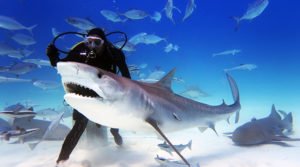
BEST SCUBA DIVING IN THE BAHAMAS
-
TIGER BEACH SCUBA DIVING
- Located an hour by boat off the west end of Grand Bahama
- Known as one of the world’s best shark diving destinations
- Depth 30 ft (9 m)
- Very shallow area with white sands make diving this spot easy and an incredible backdrop for capturing unclose photographs of sharks
- You’re guaranteed to encounter numerous tiger sharks on your dive, as well as other shark species including hammerheads, lemon, and nurse.
- Recommended Diver Experience Level: Beginner to Advanced
-
SHARK RODEO SCUBA DIVING
- Located off Walker’s Cay
- Depth 36 ft (11 m)
- An abundance of sharks come here to feed
- Recommended Diver Experience Level: Advanced
-
RUNWAY WALL SCUBA DIVING
- Located off Nassau
- Depth 40 ft (12 m)
- Site is called Runway Wall because the reef wall acts like a runway for sharks feeding
- Encounter a consistent gathering of Caribbean reef sharks
- Recommended Diver Experience Level: Beginner to Advanced
-
CURRENT CUT SCUBA DIVING
- Located between Current and North Eleuthera Islands
- Known as the best drift dive in the Bahamas
- Depth 60 ft (18 m)
- Best time to dive is with an incoming tide. The tidal change forces water between the islands, creating a high-speed drift dive. You’ll fly by colorful reefs, barracudas, eagle rays, schools of fish, and sharks without exerting any energy.
- Recommended Diver Experience Level: Beginner to Intermediate
-
WASHING MACHINE SCUBA DIVING
- Located north of the Exuma cays
- Depth from 15 to 50 ft (4.5-15 m)
- Divers will be “washed” down the current before the tide picks them up and propels them through a narrow cut in the reef. The current will then release divers at 50 ft with a colorful world of fish and reef all below them.
-
OVER THE WALL SCUBA DIVING
- Located off the coast of Andros Island
- The reef is 190 miles long and drops about 8 ft on the island side and plunges to over 6,000 ft in the Tongue of the Ocean, which is a deep oceanic trench between the islands of Andros and New Providence.
- Advanced divers must dive at night for a spectacular underwater experience. Be sure to switch off scuba dive lights once you’re at 65 ft and let the magic of the abundance of plankton guide you.
- Recommended Diver Experience Level: Intermediate to Advanced, with so many different regions to explore for advanced divers.
-
LOST BLUE HOLE SCUBA DIVING
- Located in Nassau
- Depths from 46 to 100ft (14-31 m)
- Explore a reef and wall on your dive
- Recommended Diver Experience Level: Beginner to Advanced
-
JEEP REEF SCUBA DIVING
- Located in Exuma
- Depth 36 ft (11 m)
- Healthy, colorful coral cover a sunken jeep on the sea-floor
- Recommended Diver Experience Level: Beginner
-
JAMES BOND WRECKS SCUBA DIVING
- Location off Nassau
- Depth 40 ft (12 m)
- Known as the “Underwater Hollywood”
- Purpose-sunk vessels from the 1965 and 1983 Bond films. Both movies starred Sean Connery.
- Recommended Diver Experience Level: Beginner to Advanced
-
THUNDERBALL GROTTO SCUBA DIVING
- Located west of Staniel Cay in the Exumas
- Another famous Hollywood and James Bond movie spot, featured in the films Thunderball, Never Say Never Again, Splash, and Into the Blue.
- Underwater cave system is great for snorkeling and scuba diving
- Recommended Diver Experience: Beginner to Intermediate
-
SAPONA WRECK SCUBA DIVING
- Located off Bimini
- Depth 15 ft
- Ran aground in a 1926 hurricane and sits high out of the water. It’s the perfect dive for beginners and snorkelers thanks to the shallow and crystal-clear water that surrounds the wreck.
- Recommended Diver Experience Level: Beginner to Intermediate
-
GRAND BAHAMA CAVES SCUBA DIVING
- Home to one of the world’s longest underwater cave system, the Lucayan National Park.
- Over 32,000 ft of mapped passages
- Recommended Diver Experience Level: Intermediate to Advanced, for serious cave divers. If you’re a beginner, go to Ben’s Cavern.
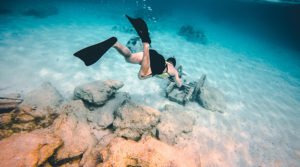
BEST SNORKELING IN THE BAHAMAS
-
ROSE ISLAND REEF SNORKELING
- Located 3 miles east of Paradise Island
- Accessible via a snorkel tour boat
- Family-friendly snorkeling location with very shallow, clear waters
- Expect to see large schools of tropical fish and colorful corals
- Teeming with tropical fish
- Two shipwrecks, the Mahoney and the Alcora
-
LITTLEHALE’S LAIR SNORKELING
- Located Grand Bahama
- Easy to navigate reef has a drop off of 85 ft
- Two small caverns which you can swim through
- Home to lobsters, large green moray eels, colorful reef fish, and large grouper. Rays and turtles can often be spotted
-
THE ABACOS SNORKELING
- Located in the Sea of Abaco
- Favorite snorkeling spots include Elbow Cay, Fowl Cays Natinoal Park, and Sandy Cay Reef, which are all accessible by boat
-
THUNDERBALL GROTTO SNORKELING
- James Bond scenes filmed in this hallowed out cave
- Might spot octopus and stingrays
- Great for snorkelers
-
BIMINI AND “ATLANTIS ROAD” SNORKELING
- Located off the coast of North Bimini Island
- Colorful marine life and black coral gardens are easily accessible by shore
- Might spot dolphins and rays
- Hammerhead sharks are known to migrate by in December and January
- Calm, clear waters
- Atlantis Road got its name because of a series of limestone blocks that appear to be a road at 15-20 ft, which some believe leads to the lost city of Atlantis
-
CURRENT CUT SNORKELING
-
ANDROS ISLAND SNORKELING
- Has over 190 miles of coral, making this one of the top spots to snorkel in the Bahamas
-
SAPONA WRECK SNORKELING
- Located off Bimini
- Depth 15 ft
- Ran aground in a 1926 hurricane and sits high out of the water.
- One of the best wrecks to snorkel in the Bahamas because of how high the wreck sits in the shallow, clear Bahamian water
- Expect to see triggerfish, lobsters, and schools of colorful fish
-
DEAN’S BLUE HOLE SNORKELING
- One of the best blue holes for snorkelers in the Bahamas because of how clear the water is and white the sands.
DISCOVER UNIQUE THINGS TO DO IN THE BAHAMAS
-
STROMATOLITES
-
- The oldest known microfossils on earth
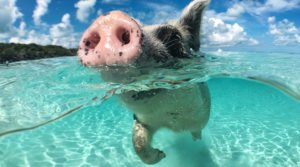
SWIMMING WITH PIGS ON PIG BEACH
-
- Located by boat on Big Major’s Cay in the Exumas
- In 1990, five baby pigs were brought to the cay and the numbers have since grown extensively
- The pigs are very sociable and want to be fed whenever a boat comes to visit
- While feeding the pigs is allowed, be careful when feeding them as they have known to bite. And make sure you’re feeding them fruits and vegetables in the water.
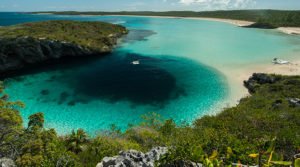
BLUE HOLES NATIONAL PARK
-
- Located in Andros
- Beautiful blue holes to explore by swimming, snorkeling, or diving
- Also a wonderful spot for birding. Expect to see Bahama Orioles, Great Lizard Cuckoos, Western Spindalis, Red-Legged Thrush, and Black-faced Grassquit
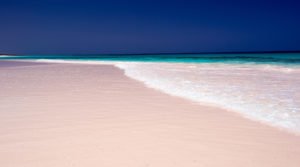
PINK SAND BEACHES
- The most famous pink sand beach in the Bahamas is located on Harbor Island and stretches for three miles.
- Off the shore of the Pink Sand Beach on Harbor Island is the Current Cut dive site Most famous pink sand beach in the Bahamas is located on Harbor Island
-
SHRIMP HOLE SWIMMING
-
- This swimming hole is teeming with shrimp and crabs
-
HAMILTON’S CAVE
-
- One of the largest caves in the Bahamas and well worth exploring
-
QUEEN’S STAIRCASE
-
- Located in downtown Nassau
- 66 limestone steps that spans 102 ft
- It took 600 slaves almost 16 years to carved the stairs in the late 1700s to connect Bennet Hill’s Fort Fincastle to Nassua
- Named after Queen Victoria, who ruled the region for 64 years and ultimately abolished salvery in the country
-
LEON LEVY NATIVE PLANT PRESERVE
-
- Located on Eleuthera
- Open daily from 9am to 5pm
- Costs $10 for adults, $8 for seniors, and $6 for children under 13 years old
- 25 acres of lush, native flora and fauna (including ferns, orchids, mangroves, and cactuses)
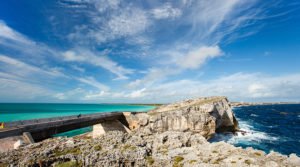
THE GLASS WINDOW BRIDGE
-
- Located on Eleuthera
- A strip of land along the Queen’s Highway that’s 30 ft at its narrowest.
- You won’t need to leave your car to see the spectacular contrast between the dark Atlantic Ocean on one side, and the bright blue waters of the Caribbean Sea on the other
- Don’t miss this visual marvel
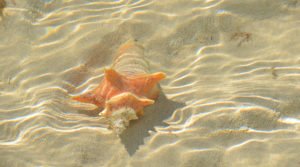
TRY COUCH SALAD
-
- One of the most famous local dishes in the Bahamas, and a must-try for any visitor
-
GO EAT AT LITE VIBES
-
- Amazing food at an all-day party with the locals

